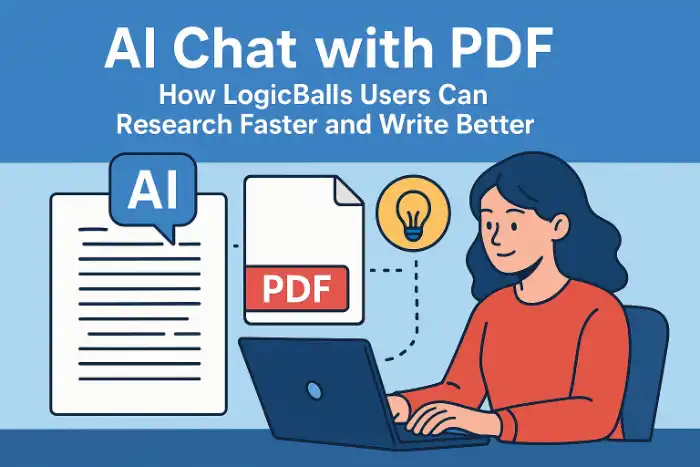In today’s digital age, email marketing still reigns supreme for customer engagement. But with rising competition, personalization and smart automation have become essential. That’s where AI Email Marketing comes in. Whether you're a small business or a large enterprise, integrating AI into existing email systems can enhance personalization, optimize timing, and increase ROI dramatically. In this blog, we’ll explore how to integrate AI into your current email workflows, the benefits of AI in email marketing, and share real-world AI email marketing examples to inspire you.
Why AI in Email Marketing?
Traditional email marketing follows a rule-based approach — you create segments, schedule emails at fixed times, and use the same copy for everyone in a list. While this method works to an extent, it's often manual, generic, and limited in personalization. That’s where AI-powered email marketing changes the game. Here’s how:
1. Predict User Behavior
AI can analyze past actions of your subscribers — such as what they’ve clicked on, opened, or purchased — to predict what they’re likely to do next. Example: If a user often buys tech gadgets in the last week of the month, AI can suggest sending promotional emails right before payday, increasing the chance of conversion.
2. Automate Personalization at Scale
Instead of manually writing different emails for different segments, AI can create tailored content (subject lines, product suggestions, offers) for each user based on their preferences. Example: E-commerce stores can send product recommendations to each user based on browsing or cart history — without needing a team to set up hundreds of variations.
3. Improve Open Rates and Conversions
AI uses algorithms to determine the best time to send an email for each individual. This send-time optimization significantly improves open and click rates. Example: If one user checks emails at 8 AM and another at 9 PM, AI ensures each one receives the email at their ideal time, leading to better results.
Benefits of AI in Email Marketing
Integrating AI into email systems unlocks powerful benefits:
1. Hyper-Personalization
AI analyzes past user behavior, preferences, and demographics to send content that truly resonates.
2. Smart Send-Time Optimization
AI predicts when each recipient is most likely to open an email, increasing engagement rates.
3. Content Automation
AI can generate subject lines, write email copy, and recommend product suggestions automatically.
4. Advanced Segmentation
AI helps segment your audience more accurately based on behavior, intent, and lifecycle stage.
5. Performance Prediction
AI can forecast campaign performance and suggest real-time adjustments to improve results.
Step-by-Step Guide to Integrate AI into Existing Email Systems
Integrating AI into your current email setup doesn’t mean you have to start from scratch. With the right steps and tools, you can transform your traditional email marketing into an intelligent, automated system. Here’s how to do it:
Step 1: Analyze Your Current Email Marketing Setup
Before adding AI, you need to understand your current system’s strengths and gaps.
- Audit Your Platform: Look at what your current email platform (like Mailchimp, HubSpot, or Sendinblue) is capable of. Does it support integrations with AI tools? What kind of data does it track?
- Review Your Workflows: Evaluate your existing automation (welcome emails, follow-ups, etc.) and how you currently segment your audience. Knowing what’s in place helps you decide where AI can make the biggest impact.
Value: This helps you avoid unnecessary complexity and ensures you choose tools that complement your system rather than replace it.
Step 2: Choose the Right AI-Powered Email Tools
The market is full of tools, but the key is to find ones that easily integrate with your current platform and offer features that meet your goals. Some popular tools include:
- Mailchimp – Offers predictive insights and content optimization
- ActiveCampaign – Features AI-driven automation for personalized journeys
- Seventh Sense – Optimizes send times based on user behavior
Pro Tip: Choose tools that directly integrate with your platform or have APIs, so setup is seamless and data flows smoothly. Value: You avoid tech issues and reduce manual work by picking tools that plug right into your system.
Step 3: Connect AI Tools with Your Email Platform
Now that you’ve chosen your tools, it’s time to set them up and connect them to your existing platform.
- Use API or Built-in Integrations: Most modern platforms offer simple integrations — either built-in or through plugins/extensions.
- Sync Your Data: Ensure your contact lists, behavioral data (clicks, opens, purchases), and templates are synced across platforms.
- Test AI Triggers: Set up sample workflows (e.g., auto-send an email when a user visits a product page) to make sure your AI rules are working.
Value: This step ensures your AI tool gets the data it needs to make smart decisions in real-time.
Step 4: Train and Test AI Features
AI gets smarter over time — but only if you test and optimize it.
- A/B Test AI-Generated Content: Try different AI-written subject lines or body content to see which performs better.
- Monitor Recommendations: Let AI recommend send times, content, or segments, then compare results to your manual campaigns.
- Track Key Metrics: Focus on open rates, click-through rates, and conversions to see where AI is improving performance.
Value: Testing helps you build trust in the AI system and optimize performance without risking your entire campaign.
Step 5: Automate and Scale Your AI Email Campaigns
Once you're confident in your AI setup, it’s time to scale up and let AI do more heavy lifting.
- Build Full AI-Driven Workflows: Use AI to manage welcome sequences, abandoned cart emails, re-engagement campaigns, upsell flows, and more.
- Use Real-Time Analytics: Allow AI to adjust your email content or send time based on user behavior and campaign performance.
- Refine Regularly: Set a routine to review AI decisions, update your data sources, and improve workflows over time.
Value: This is where AI starts saving your team serious time while improving your marketing ROI.
Top AI Email Marketing Examples
Understanding how industry leaders use AI in email marketing can give you a clear picture of what's possible. These companies don’t just use AI for convenience — they use it to drive engagement, improve personalization, and increase revenue through email. Here are a few standout examples:
🔹 Amazon – Personalized Product Recommendations
Amazon is one of the best examples of AI in action. The platform tracks your browsing history, purchase behavior, and even time spent on product pages. Then, using AI algorithms, Amazon sends emails with:
- Product recommendations tailored to your interests
- Reminders for items left in the cart
- Deals on products you’ve viewed recently
What You Can Learn: You can use AI to analyze customer behavior and create personalized email campaigns that suggest the right products at the right time — even if you’re not Amazon.
🔹 Spotify – Hyper-Personalized Listening Emails
Spotify leverages AI to analyze what users listen to, when, and how often. Their email campaigns often include:
- Weekly “Discover” playlists
- Suggested new releases based on user taste
- Recaps like “Your 2024 Wrapped” which highlight your top songs and artists
These emails are deeply personal, often prompting users to open them just out of curiosity. What You Can Learn: Personalization isn’t just about names — it’s about content relevance. Use AI to create email content that reflects each user’s habits, preferences, or usage patterns.
🔹 Netflix – AI-Driven Content Recommendations
Netflix’s AI tracks your viewing behavior to suggest shows and movies you’re likely to enjoy. Their emails include:
- Personalized watch suggestions
- Alerts for new seasons of shows you’ve watched
- Recommendations based on genres or actors you frequently watch
What You Can Learn: Even if you’re not in entertainment, you can use behavioral data to recommend content, services, or offers your audience is more likely to engage with.
✅ What These Brands Teach Us About AI Email Marketing
- Behavior Tracking = Better Engagement: Each brand uses real-time behavior to drive their email content.
- Automation at Scale: AI enables these companies to send millions of unique emails without manual work.
- Emotional Connection: Hyper-personalized content builds loyalty and trust with users.
Best Practices for AI Integration with Email Platforms
- Start small and scale gradually
- Focus on high-impact areas like subject lines and segmentation
- Always monitor performance and refine strategies
- Ensure GDPR and data privacy compliance
Conclusion
Integrating AI into existing email systems is no longer a luxury—it’s a necessity. From automation to personalization, AI Email Marketing boosts your campaign effectiveness and helps you connect with your audience more meaningfully. Whether you use basic automation or advanced personalization, AI can elevate your strategy. Start testing AI tools today and watch your email performance soar.
Key Takeaways
- AI Email Marketing improves personalization, timing, and engagement.
- Integrate AI through tools like Mailchimp, ActiveCampaign, or Gracker AI.
- Monitor and optimize continuously for best results.
- Real brands like Amazon and Netflix are already using AI for impactful campaigns.



